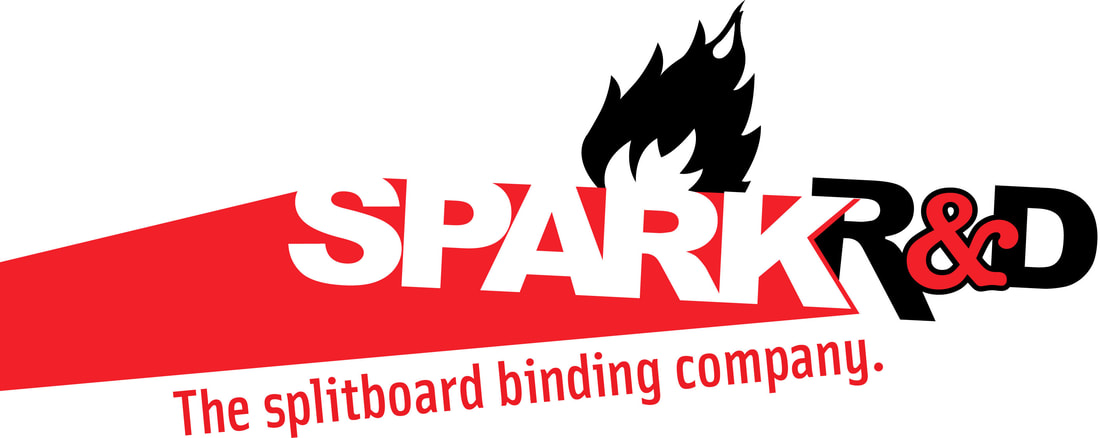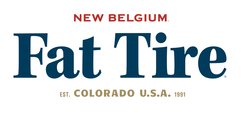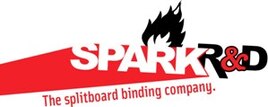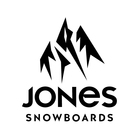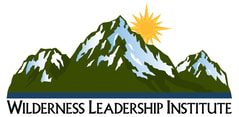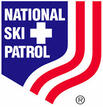Snowpack Summary March 31, 2023
Posted by Allen Giernet @ 6:15 am (this summary expires in 24 hours)
This summary applies to backcountry areas only.
The Bottom Line –
Small Wind Slab avalanches will be possible to human trigger today mainly near and above tree line on Northwest to North to Northeast aspects near ridges and on sides of gullies. Wind slabs may be possible on all aspects at upper elevations. Look for signs of transported snow, cornices, wind scouring, wind textured snow and pillowed hollow sounding snow to indicate areas of wind loading. Avoid slopes over 30° if you find these indications. Active wind loading will still be likely with moderate to strong West to Southwest winds forecast today and plenty of transportable snow available.
Please share your observations with us at the avalanche center Submit Reports page.
Posted by Allen Giernet @ 6:15 am (this summary expires in 24 hours)
This summary applies to backcountry areas only.
The Bottom Line –
Small Wind Slab avalanches will be possible to human trigger today mainly near and above tree line on Northwest to North to Northeast aspects near ridges and on sides of gullies. Wind slabs may be possible on all aspects at upper elevations. Look for signs of transported snow, cornices, wind scouring, wind textured snow and pillowed hollow sounding snow to indicate areas of wind loading. Avoid slopes over 30° if you find these indications. Active wind loading will still be likely with moderate to strong West to Southwest winds forecast today and plenty of transportable snow available.
Please share your observations with us at the avalanche center Submit Reports page.

Wind Slab avalanches are the release of a cohesive layer of snow (a slab) formed by the wind. Wind typically transports snow from the upwind sides of terrain features and deposits snow on the downwind side. Wind slabs are often smooth and rounded and sometimes sound hollow, and can range from soft to hard. Wind slabs that form over a persistent weak layer (surface hoar, depth hoar, or near-surface facets) may be termed Persistent Slabs or may develop into Persistent Slabs.
General Summary
#1 Wind Slab – Recent snow and moderate to strong winds will have formed small wind slabs at upper elevations. Mainly on Northern to Eastern aspects near and above 8,000’ but possible on other aspects due to topographical influence. Wind Slabs will be found below ridges and on sides of gullies. With snow available for transport and moderate to strong winds forecast through the day active loading may still be likely. We have little field information at this time due to limited access into some of the mountain regions, Look for the signs of wind slab develop as you travel. Watch for active wind transport, cornices, scoured areas on windward slopes, wind texture and be aware of pillowed hollow sounding snow as indications of wind slabs or where wind slabs have developed. Stick to lower angle terrain below 30° if you encounter any wind slabs or move to a slope where this problem does not exist.
Weekend Outlook: Clearer skies and some warming will bring settling to the snowpack. Lower elevation southerly aspects will have the potential for wet loose avalanches with warm afternoon temps and solar input increasing through the weekend.
Exercise caution if venturing out into the mountains and use avalanche protocols, travel with a partner and bring your beacon, shovel and probe.
Please share any information when you are out in the mountains. Even a photo is helpful. Submit observations to Submit Reports page.
#1 Wind Slab – Recent snow and moderate to strong winds will have formed small wind slabs at upper elevations. Mainly on Northern to Eastern aspects near and above 8,000’ but possible on other aspects due to topographical influence. Wind Slabs will be found below ridges and on sides of gullies. With snow available for transport and moderate to strong winds forecast through the day active loading may still be likely. We have little field information at this time due to limited access into some of the mountain regions, Look for the signs of wind slab develop as you travel. Watch for active wind transport, cornices, scoured areas on windward slopes, wind texture and be aware of pillowed hollow sounding snow as indications of wind slabs or where wind slabs have developed. Stick to lower angle terrain below 30° if you encounter any wind slabs or move to a slope where this problem does not exist.
Weekend Outlook: Clearer skies and some warming will bring settling to the snowpack. Lower elevation southerly aspects will have the potential for wet loose avalanches with warm afternoon temps and solar input increasing through the weekend.
Exercise caution if venturing out into the mountains and use avalanche protocols, travel with a partner and bring your beacon, shovel and probe.
Please share any information when you are out in the mountains. Even a photo is helpful. Submit observations to Submit Reports page.
General Mountain Weather Forecast |
Weather Page Link
Click on the links below for the latest information
Click here for this Season's Snow Pack Summaries
To better understand the challenges and potential variability over the large area we are producing information for please read our Snowpack Summary - Format and Limitations
Disclaimer:
This Bulletin is designed to generally describe conditions where local variations always occur. Travelers are advised to exercise caution and make slope specific evaluations. As always, please treat this bulletin with appropriately guarded skepticism and make your own assessments. Help to provide more information to the community by reporting your observations
This Bulletin is designed to generally describe conditions where local variations always occur. Travelers are advised to exercise caution and make slope specific evaluations. As always, please treat this bulletin with appropriately guarded skepticism and make your own assessments. Help to provide more information to the community by reporting your observations
Latest Observtions
Click on the observation to go to the full report
|
Observation type
Avalanche Location - Cerro Noroeste N. Date (yyyymmdd) -20230326 Comment I was on my second descent of Cerro Noroeste of the day ~1:00 PM. Conditions were variable with north facing trees holding pockets of soft snow, with a crust forming in areas with significant sun exposure. Skiing the bowl, I observed an opening at about 7500 ft. Making turns in soft snow, as pitch increased, I realized I was funneling into chute with avalanche potential, but continued being relatively confident in snow stability today, considering recent rain events with only the most recent precip. falling as snow. About 1/3 of the way down I felt a transition to firmer/harder conditions. Noting some turns that felt like 8-12 inches directly on top on scree/rocks. About 2/3 of the way down, seeing a safe(ish) spot, I pulled off the avy path to rest/evaluate. Knowing the chute had slide prior to the recent storm, I was expecting to see debris/run-out, but was surprised by the depth (>20 feet deep) and magnitide (~300 feet long). It appears to have been a natural slide, possibly triggered by the rain event. |
Observation type -
Snowpack Location - San G Wilderness Date (yyyymmdd) - 20230325 Comment - We toured from 6,900' feet up to 11,250'. Snow coverage was good enough to begin skinning right at 6,900'. Zero wind, with occasional gentle gusts. Temps were cold, did not measure but felt like high teens / low 20's in the morning. Skinned up to 11,250' and winds continued to stay calm, temps felt like well below freezing. Minimal crusts were observed on the skin up. After ascending into the bowl beneath Little Charlton/Jepson we observed multiple small r1d1 avalanches on steep exposed NW facing aspects well above treeline. They appeared to be small wind slabs that released. Some moderate cornice formation on the ridge between Jepson Peak and Little Charlton suggests some loading on the N and NE aspects below alpine ridge lines, but no other other signs of instability were observed. |
Observation type
Snowpack Location - Baden Powell Date (yyyymmdd) - 20230323 Comment - Obvs on BP. March 23, 2033. Early morning, 8am, while breaking trail on BP we noticed a poor bonding interface with recent snow from the day before. At 6700’ there was 35cm of new snow over a older, heavy and dense 35cm base. Respective bonding between the old base and new snow did not show any instability and was bonding cohesively. Recent precip came right side up, with the last 15cm of fist dense snow sitting on a interface of graupel. Beneath the weak graupel interface was 20cm of four finger, with a gradual transition to 1 finger snow. CTM 12, SCQ1 at 15cm graupel interface. This grapuel interface showed with the same result at another pit dug at 7800’, CTM 12 SCQ1 at 20cm interface, but did not present itself within the snowpack above this elevation The north face drainage/couloir did have substantial debris from an obvious wet slab avalanche, most likely due to last weeks heavy rain event. R3/D3 with very large swaths of snow that were ripped from canyon walls approx 12’ high and large fields of snow/ice debris that were covered with new snow from day before. I would estimate this slide started at approx 8k and ran the course of the drainage to the bench on highway 2 at 6800’, at a distance of 3/4 of a mile. No other evidence of avalanche or instability was observed. Snow depths as we climbed were as follows.. 6.7k 90cm 7.9k 170cm 8.1k 215cm 8.6k 230cm 9.2k >280cm |
Observation type
Avalanche Location - Wrightwood Date (yyyymmdd) - 20230323 Comment - Spotted a large crown on the upper reaches of Wright Mountain midday Thursday. Most likely a natural slide that occurred in the past 24hrs. Location is at approximately 8450ft on a ~40deg NNE slope. Difficult to assess exact crown height, but given its prominence as viewed from 6100ft and wind-loading prone area, I would estimate >1 meter. Probably a wind slab sliding on a slick, rain saturated melt/freeze later. Did not see any evidence of recent slides in adjacent gullies. |
General Caution
You should always use safe terrain management and carry avalanche rescue equipment in the backcountry. Most avalanches are triggered by someone in the party or the victim. Practice with your rescue gear often and be prepared should the worst happen. Though we do not have an avalanche forecast center in this area as of yet, the information posted and shared here as well as the resources available on this site will help to make informed decisions for your backcountry travels. Use avalanche forecasts in your travels wherever available and be aware that avalanche ratings are general information. Elevation, location, geographic variability’s, slope aspect and angle all have effects on the particular area you travel in. This is only one piece of the information you should use in your decision making process. There is no substitute for avalanche education, for more resources and information as well as education please refer to our resources page.
You should always use safe terrain management and carry avalanche rescue equipment in the backcountry. Most avalanches are triggered by someone in the party or the victim. Practice with your rescue gear often and be prepared should the worst happen. Though we do not have an avalanche forecast center in this area as of yet, the information posted and shared here as well as the resources available on this site will help to make informed decisions for your backcountry travels. Use avalanche forecasts in your travels wherever available and be aware that avalanche ratings are general information. Elevation, location, geographic variability’s, slope aspect and angle all have effects on the particular area you travel in. This is only one piece of the information you should use in your decision making process. There is no substitute for avalanche education, for more resources and information as well as education please refer to our resources page.
